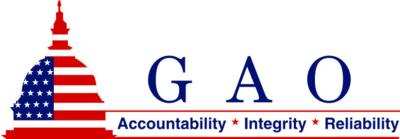Thu, Aug 02, 2012
Concerned About Government Responsibility For Third Party Losses
A report issued by the Government Accountability Office (GAO) indicates that the U.S. provides less commercial space launch indemnification for third party losses than China, France, and Russia, according to recent studies. These countries put no limit on the amount of government indemnification coverage, which in the United States is limited by the Commercial Space Launch Act Amendments of 1988 (CSLAA). Governments' commitments to pay have never been tested because there has not been a third party claim that exceeded a private launch company's insurance.

The GAO says that the potential cost to the federal government of indemnifying third party losses is currently unclear because it depends in part on the method used by the Federal Aviation Administration (FAA) to calculate the amount of insurance that launch companies must purchase, a calculation that may not be sound. FAA has used the same method since 1988 and has not updated crucial components, such as the cost of a casualty. Estimating probable losses from a rare catastrophic event is difficult, and insurance industry officials and risk modeling experts said that FAA's method is outdated.
FAA, however, has not had outside experts or risk modelers review the appropriateness of its method. An inaccurate calculation that understates the amount of insurance a launch provider must obtain would increase the likelihood of costs to the federal government; a calculation that overstates the amount of insurance needed would raise the cost of insurance for the launch provider. FAA officials said that their method was reasonable and conservative, but they agreed that a review could be beneficial and that involving outside experts might be helpful. Overall, they said use of more sophisticated methodologies would have to be balanced with the additional costs to both FAA and the launch companies that would result from generating and analyzing additional data.
The insurance market is generally willing and able to provide up to $500 million per launch as coverage for third party liability, according to industry representatives. Because the amount of insurance FAA requires launch providers to obtain averages about $99 million per launch, and coverage available through CSLAA is about $2.7 billion above that, insurers could provide some of the coverage currently available through CSLAA. However, the amount and price of insurance that could be provided could change quickly if a large loss were to occur, according to insurance industry representatives.
The GAO says the effects on global competition from the United States eliminating CSLAA indemnification are unknown. However, launch companies and customers GAO contacted believe that ending federal indemnification could lead to higher launch prices for U.S.-based launch companies, making them less price competitive than foreign launch companies. Although the cost of third party liability insurance for launch companies has been about 1 percent of the dollar amount of coverage they purchased, how much this cost might increase in the absence of federal coverage is not clear. Launch customers said that price and vehicle reliability were key factors in their choice of a launch company. Launch companies reported that additional costs would be passed along to customers, but whether this increase alone would be sufficient reason for a launch customer to choose a foreign company over a U.S. company is unclear.
More News
Runway Lead-in Light System Runway Lead-in Light System Consists of one or more series of flashing lights installed at or near ground level that provides positive visual guidance a>[...]
Aero Linx: Aviation Without Borders Aviation Without Borders uses its aviation expertise, contacts and partnerships to enable support for children and their families – at hom>[...]
Dave Juwel's Aviation Marketing Stories ITBOA BNITBOB ... what does that mean? It's not gibberish, it's a lengthy acronym for "In The Business Of Aviation ... But Not In The Busine>[...]
From 2010 (YouTube Version): Yeah.... This IS A Really Cool Job When ANN's Nathan Cremisino took over the lead of our Aero-TV teams, he knew he was in for some extra work and a lot>[...]
Also: Junkers A50 Heritage, Montaer Grows, Dynon-Advance Flight Systems, Vans' Latest Officially, the Carbon Cub UL and Rotax 916 iS is now in its 'market survey development phase'>[...]
 ANN's Daily Aero-Term (04.24.24): Runway Lead-in Light System
ANN's Daily Aero-Term (04.24.24): Runway Lead-in Light System ANN's Daily Aero-Linx (04.24.24)
ANN's Daily Aero-Linx (04.24.24) Aero-FAQ: Dave Juwel's Aviation Marketing Stories -- ITBOA BNITBOB
Aero-FAQ: Dave Juwel's Aviation Marketing Stories -- ITBOA BNITBOB Classic Aero-TV: Best Seat in The House -- 'Inside' The AeroShell Aerobatic Team
Classic Aero-TV: Best Seat in The House -- 'Inside' The AeroShell Aerobatic Team Airborne Affordable Flyers 04.18.24: CarbonCub UL, Fisher, Affordable Flyer Expo
Airborne Affordable Flyers 04.18.24: CarbonCub UL, Fisher, Affordable Flyer Expo



